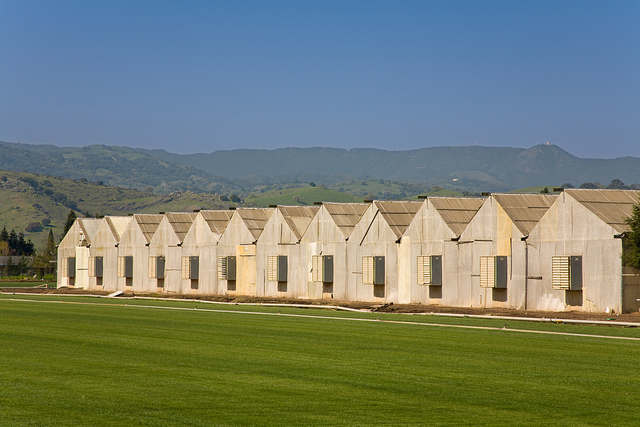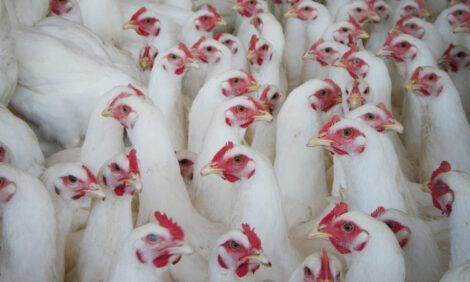



A Guide to Preventing Poultry House Fires
Poultry house fires can be a disaster for a producer, resulting in the loss not only of the house itself, but also the flock inside it. Large-scale producers can lose flocks in the tens of thousands, not to mention the costs of replacing the equipment and facilities. Dan Turner describes measures that can be taken for ThePoultrySite.Preventing these fires is the most important part of fighting them, as once they start they are often very difficult to stop; the steps to doing so are very simple, but require a producer to be very, very thorough in their maintenance.

Ensure equipment is in order
The most important thing to do, according to the Fire Prevention Association, is maintenance.
The gas and electric heating systems for the sheds need to be carefully placed and maintained in order to prevent them from coming into contact with any flammable materials. Brooder stoves should be kept safely and stored carefully, with fuel stored in separate buildings. Electricity supplies should also be carefully maintained, with permanently wired cords checked regularly for wear and fraying.
This maintenance is easiest to complete when there is no flock in the shed, and this is also the most important time to be checking for anything potentially dangerous, according to government guidelines.
The majority of these fires occur just after a flock has been moved into, or out of, a facility. The large-scale movement of the flock, and the equipment necessary to do it, can easily compromise fuel pipes, cables, or circuits.
Check the health of your poultry houses
The age of the building, and the systems installed within it, is also a critical factor in preventing these fires. Manufacturer's guidelines should always be followed in the use of any equipment, and these heating systems are no exception.
Electrical systems should be inspected by an electrician at least every fifteen years, and any new equipment should be capacity-tested with the circuits in use. It is also important that circuit breakers are replaced every fifteen years.

Fire accounts for the loss of 75 per cent of agricultural and industrial buildings over 20 years old, so it’s easy to see just how important replacing these systems can be in the long-run.
The staff working on the farm are the most important people when it comes to preventing these fires. All staff working in and around the poultry houses should be fully aware of what can causes the fires, and how to spot the signs of equipment which may cause a problem, or practices which may increase the risk of an accident.
At least one responsible member of staff should also always be available to take the necessary action and co-ordinate the efforts of others in the event of fire, but prevention is paramount.
Prepare for a quick exit for the birds
The guidelines in place to protect the birds themselves are also strict concerning where exits should be placed and how they should be accessed. For commercial buildings these rules take into account the sheer scale of the operations, with multiples exits required for buildings longer than thirty meters, for example.
For the protection of the birds in a more general sense, any gates into the poultry house should be able to open into and out of the building. This provides easy access to the birds for emergency services, and also a quick exit for any birds in the building at the time of the fire. Crucially, this also allows for the animals to escape with a minimum of human assistance.
The installation of smoke and heat alarms is also very important in order to prevent the loss of both life and property, and these are required by law in order to provide a safe environment for the birds.
There are extensive government guidelines dealing with the proper care of poultry available online free of charge, which walk the reader through proper care of livestock, and fire prevention in particular.
Planning for the worst-case scenario
The effects that a fire can have on a large-scale poultry producer can be huge, though insurance policies should be in place to cover the loss of the flock, the costs of re-building any lost facilities, and loss of revenue due to production disruption.
Poultry producers should also have contingency plans in place in the event of a fire. These precautions amount to a large amount of forward planning, but in order to prevent loss of revenue or supply contracts, having contingencies in place in the event of a fire could prevent an accident threatening the livelihood of the producer.
When planning for these contingencies, it is worth remembering that there are many organizations that are willing to offer constructive advice on fire safety.
This ranges from issues such as fire prevention and the training of staff for emergency action, through to the most up to date standards on building design and the best type of insurance cover to take out.
It is also useful to remember that when in doubt, it is always best to consult experts for advice, much of which is available free of charge.
Further Reading
UK government guidelines and advice can be found at this website, as well as contact details for further advice.











